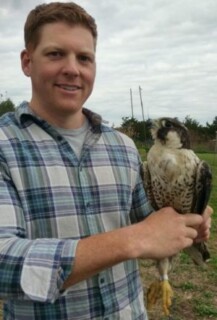
Local High School Students Team up with UConn and Great Hollow on Research Projects
There’s something fishy about New Fairfield High School student, Lucie Tuthill. Lucie is a participant in UConn’s fantastic Conservation Ambassador Program, in which teens learn about conservation science from professors and graduate students, and partner with an organization in their community to conduct a conservation project. With Great Hollow as her community partner and mentorship from Uconn professor Dr. Jason Vokoun and Ph.D. student Megan Upp, Lucie is conducting a study of the fish in Quaker Brook and its tributaries within Great Hollow Nature Preserve. Her project will help inventory and determine the density of all of the fish species living in the stream, and also provide information on age class distribution, which is indicative of population health. Quaker Brook is one of a dwindling number of streams in Connecticut that is clean and healthy enough to support completely wild (i.e., not hatchery-raised and stocked) brook trout. Learning more about the brook trout population in Quaker Brook will help us to monitor its status and hopefully ensure its persistence into the future.
Great Hollow is lucky enough to also be the community partner for Brookfield High School student, Luke Shanahan’s project on bobcats. For his Conservation Ambassador Program project, Luke is working with Dr. Tracy Rittenhouse and master’s student Kristen Beattie to study the diet of bobcats and the composition of their prey base at Great Hollow and beyond. In recent decades, bobcats have rapidly acclimated to moderate levels of development and moved into suburban areas where they once were extremely rare. Luke’s project is part of a larger effort to learn more about the ecology and behavior of bobcats in these human-dominated landscapes of Connecticut. By attracting bobcats with scented lures to rub against “hair snares” set up throughout Great Hollow and nearby study sites, Luke and his mentors can obtain fur samples that hold many secrets about the cats’ diet. The team is comparing isotopic signatures in the bobcat fur to the fur of various smaller mammals also sampled at Great Hollow to find out what critters bobcats are primarily feeding on. In the process, Luke is also providing us with our first inventory of the community of small mammal species (shrews, moles, voles, weasels, mice, etc.) inhabiting Great Hollow.
We’re thrilled to be working with these bright, aspiring biologists from our local high schools and the great faculty and graduate students at UConn.
(pictured above: brook trout about to be measured and then released by Lucie)

 Previous Post
Previous Post Next Post
Next Post